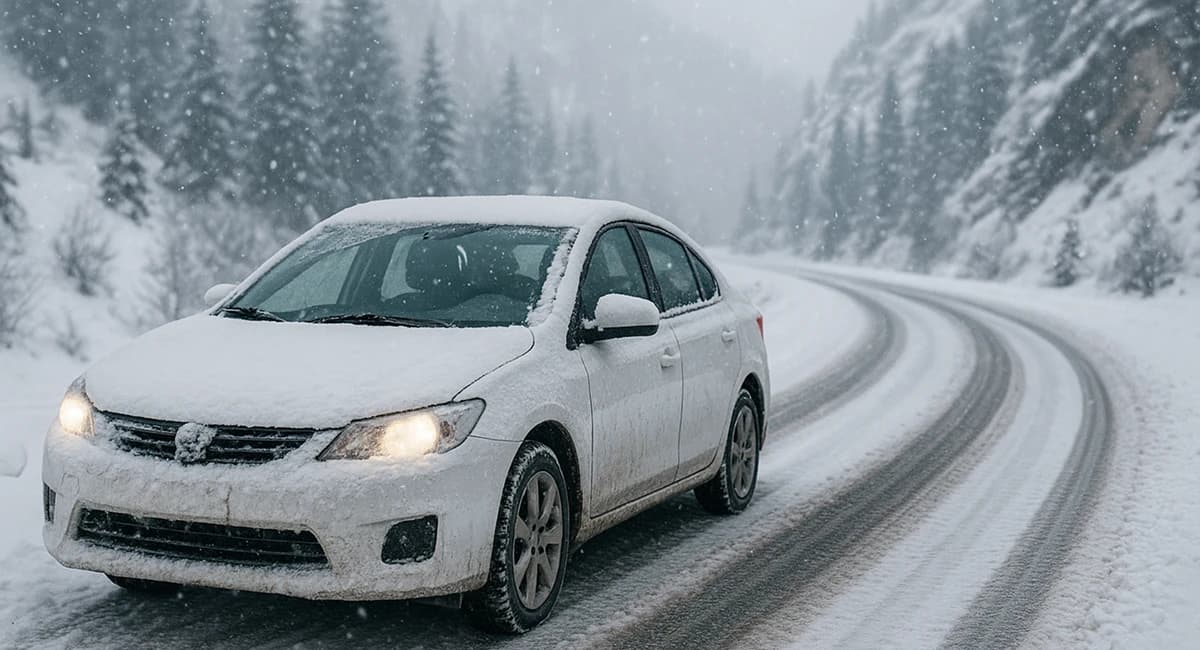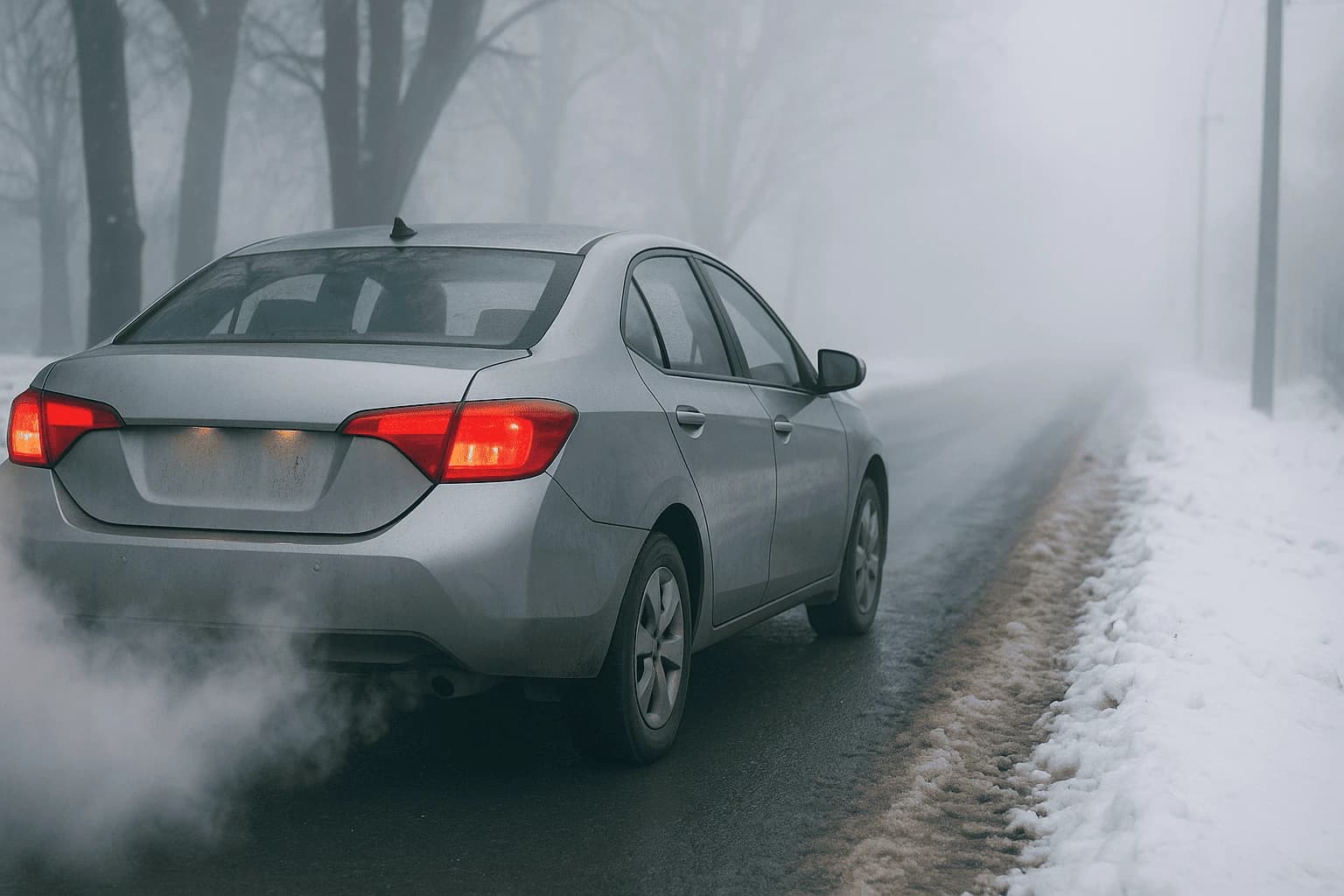
* All product/brand names, logos, and trademarks are property of their respective owners.
Winter in Pakistan’s northern regions isn’t just a beautiful snowfall experience—it brings with it some serious challenges, especially for car owners. From the steep, winding roads of Murree and fog-covered highways in Abbottabad to the freezing temperatures in Gilgit and Skardu, the winter season demands more than just a warm coat—it demands a winter-ready car.
As temperatures drop to subzero levels, your vehicle faces new kinds of pressure. Engine oil thickens, batteries lose power, tires deflate, and radiators can freeze over. Whether you’re planning a snowy vacation or live in a northern hill station, understanding proper winter car care is not a luxury—it’s a necessity.
This blog is your go-to guide for winter car care tips tailored specifically for the northern areas of Pakistan. We'll cover the must-do maintenance routines to protect your engine, extend battery life, and ensure your tires grip icy roads safely. You'll also discover tips for staying safe while driving in fog, snow, and on steep slopes common in these regions.
We’ll go beyond the basics and explore topics rarely covered—like CNG safety in cold weather, how to protect rubber seals from freezing, and what to include in a winter emergency car kit. These tips aren’t just meant for mechanics—they’re simple, practical, and easy enough for any car owner to follow.
So whether you’re heading up north to enjoy the snow or just bracing for another frosty season, this guide will help you prepare your car for whatever winter throws your way. Let's dive in and make sure your vehicle is winter-ready from bumper to bumper.
Cold weather and mountainous terrain can push your car to its limits. Preparing your vehicle for winter ensures safety, reliability, and peace of mind while traveling in areas like Swat, Hunza, and Murree. Let’s look at the most important components to inspect and maintain as winter arrives.
As temperatures drop, the viscosity of your engine oil becomes crucial. Thicker oil can make it harder for your engine to turn over, especially in the early morning chill. Switching to a winter-grade oil, such as 5W-30 or 10W-40, allows smoother starts and better lubrication in freezing conditions. If you're unsure, ask your mechanic for oil that performs well in subzero temperatures.
Batteries are another key component affected by winter. The cold reduces a battery's Cold Cranking Amps (CCA)—the power it needs to start your engine. In areas where temperatures often drop below freezing, like Gilgit or Skardu, a weak battery can leave you stranded. Check the battery’s health, ensure terminals are clean, and replace it if it's older than three years. A battery blanket or insulator can also help retain warmth and boost performance.
Driving on snow or icy roads demands better traction than normal conditions. In cities like Abbottabad or Chitral, switching to winter tires or all-terrain tires can make a world of difference. These tires are made from rubber that remains soft in cold weather and have deeper treads for improved grip.
Even if you’re not using specialized tires, ensure your current ones have at least 5mm tread depth and check the tire pressure weekly. Cold weather causes air to contract, reducing pressure and affecting both fuel economy and grip. Consider carrying snow chains if you’re heading to higher altitudes—these simple tools can keep you from sliding on icy roads.
Your engine’s cooling system does more than keep it from overheating—it also prevents freezing in winter. Many car owners in Pakistan mistakenly fill radiators with plain water, which can freeze overnight and crack the radiator. Use a proper antifreeze/coolant mix—typically a 50/50 blend—for protection down to -30°C.
Before winter hits, check the coolant level and inspect hoses for cracks or leaks. It’s also a good time to flush and replace old coolant, especially if it’s been over two years. Keeping your radiator and coolant system in good condition helps maintain consistent engine temperature and ensures your car heater works efficiently too.
Driving through Pakistan’s northern regions in winter isn’t just about reaching your destination—it’s about doing so safely. Whether you’re navigating through a foggy morning in Mansehra or climbing snow-covered bends in Kalam, preparation is key. Here's how to equip yourself and your car for winter driving challenges.
Reduced visibility is one of the most dangerous aspects of winter driving. Dense fog, snowfall, and shorter daylight hours all make it harder to see and be seen. Start by checking all your vehicle lights, including headlights, brake lights, and indicators. Clean the lenses and replace any dim or burnt-out bulbs.
Installing yellow fog lights can dramatically improve visibility in murky conditions, especially in areas like Murree or Hazara. Yellow light has a longer wavelength and cuts through fog better than white beams.
Next, focus on your wiper blades. If they streak or squeak, replace them with winter-grade blades that can handle snow buildup. Also, refill your windshield washer reservoir with winter-safe washer fluid that won’t freeze in low temperatures. This ensures a clear windshield no matter the weather.
When driving through remote, snowy routes, being stuck can quickly become dangerous. That’s why a winter emergency kit is a must-have. Essentials include:
Warm blankets or sleeping bag
Flashlight with extra batteries
Foldable snow shovel
Traction aids like sand or cat litter
Jumper cables
First aid kit
Packaged snacks and water
You might also consider carrying a power bank or spare phone charger, especially in areas with weak signals. Having these items ensures you're not helpless if your car breaks down or you’re caught in a traffic jam on a snow-covered mountain road.
Driving on icy roads requires a change in technique. Always drive slowly and avoid sudden movements—no sharp braking or hard turns. Use low gears when going downhill, especially on winding mountain roads like the Karakoram Highway or Nathia Gali route. This reduces the risk of slipping and gives you better control.
In fog or snow, maintain a greater following distance than usual. Keep your hazard lights on in low visibility and never overtake unless absolutely necessary. Be extra cautious on bridges and shaded road sections, where black ice can form and cause sudden skids.
Lastly, avoid using CNG during subzero temperatures—CNG kits can freeze and affect ignition. If you rely on CNG, start your car on petrol and allow the engine to warm up before switching over.
Winter in the northern areas of Pakistan is as breathtaking as it is unpredictable. Whether you're a resident of Hunza or planning a snowy weekend in Murree, taking the time to winterize your vehicle can make the difference between a smooth drive and a stranded nightmare. The tips we’ve covered aren’t just precautionary—they’re essential.
From switching to winter-grade engine oil to checking your battery's cold cranking power, the small checks add up to major peace of mind. Ensuring your tires have proper tread, your radiator is filled with antifreeze, and your headlights are functioning properly are all part of the winter prep puzzle. Each component plays a role in keeping you safe on icy roads and through dense fog.
We also explored critical safety measures—like assembling a winter emergency kit, using fog lights correctly, and adopting cautious driving habits for snowy and sloped roads. For those in the high-altitude northern belt, it’s also important to understand CNG limitations in freezing temperatures and protect components like rubber seals and undercarriages from long-term cold weather damage.
In short, winter car care isn’t just mechanical—it’s personal. It’s about ensuring you and your family can travel without anxiety, whether it’s a daily commute through the fog or a scenic trip through snow-capped mountains. Preparedness is power—and in the winter, it’s safety too.
So go ahead—run that checklist, prep your ride, and embrace the season confidently.

19 November 2025
No comments yet. Be the first to comment!